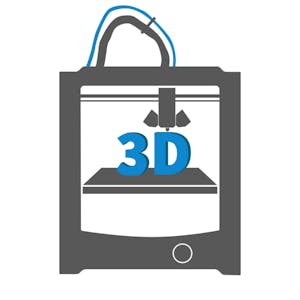Description
This course uses a learning-by-doing approach to cover all of the material. Each video was created to be viewed on its own. They are brief and concentrate on one or a few concepts to make them easier to understand and reference.
Since 2010, there has been a noticeable increase in the availability of consumer-level desktop 3D Printers that use the Fused Deposition Modeling - FDM 3D Printing technology. Nowadays, having a desktop 3D printer is expected in every university, makerspace, and community innovation centre. They are also becoming more widely available at very low prices, as low as USD 200. This course delves deeper into the FDM desktop 3D Printer topic. It discusses the technology background, how to use an FDM 3D Printer, how to use slicer software, design considerations for printing with an FDM 3D Printer, and key considerations for purchasing a desktop FDM 3D Printer.
In this course, you will learn :
- What is Fused Deposition Modeling (FDM) 3D Printing and its history
- The common parts of a desktop FDM 3D Printer
- The journey to 3D Print a part from CAD to 3D printing
- The major settings for a 3D model from a CAD software for 3D Printing
- How to use the Ultimaker Cura slicer software to generate the G-code
- How to export the G-code from the slider to the 3D Printer
- How to extract the 3D print from the 3D Printer
- The common post-printing processes
- The major design considerations for printing with FDM
- The major considerations for purchasing a desktop FDM 3D Printer










